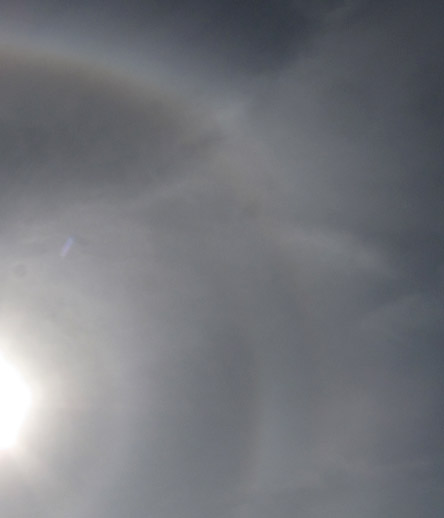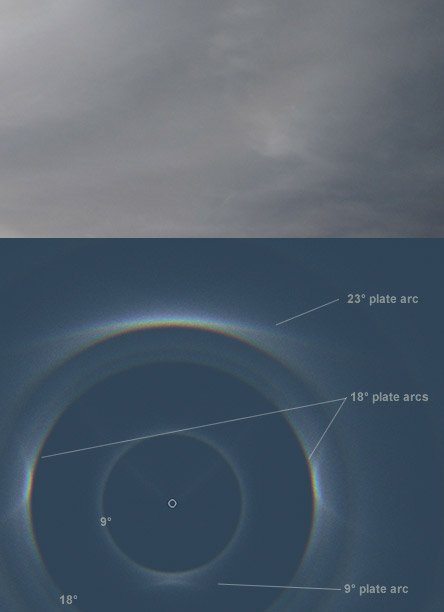 |
 |
 |
 |
||
 |
| Pyramidal Crystal Display, Thailand ~ Imaged by Phongsathon Kitchawet at Chiang Mai. Ice halo displays occur frequently in hot equatorial regions but this one is unusual. It was made by pyramidal ice crystals, some of which were aligned in the high cirrus rather than having their more common random orientations. ©Phongsathon Kitchawet, shown with permission. |
| Outwards from the sun there is a clear 9� radius halo then another at 18�. Beyond that we see a broad ring that could be a combination of 20, 23 and 24� radius halos. Circular halos with all these inner radii can be generated by various ray routes through randomly oriented pyramidal ice crystals. But the rings of the image are not uniformly bright. The 9� is brightest at the bottom (the image is tilted slightly). The 18� radius ring is brightest on each side. There is a coloured arc rather like an upper tangent arc at top some 23-24 degrees from the sun. These are hints of pyramidal �plate arcs� � arcs made by crystals oriented like ordinary plate crystals. The difference is that aerodynamic drag is not good at orienting pyramidal crystals. Their alignment is poor and the plate arcs are usually poorly defined. At right is a HaloSim computation for the display using crystals like those illustrated. 50% were randomly oriented and the remainder had rough plate type orientations (distribution of c axis tilts up to �12� from vertical). At lower right is a simulation with all the crystals randomly aligned. The simulation plate arcs are better defined and show more features than those of the image. The bright upper arc is a 23� plate arc. Further adjustment of crystal proportions and orientations might better reproduce the details but often it does not. There could be more going on. |
 |
 |
 |
 |
||
 |

| About - Submit | Optics Picture of the Day | Galleries | Previous | Next | Today |